
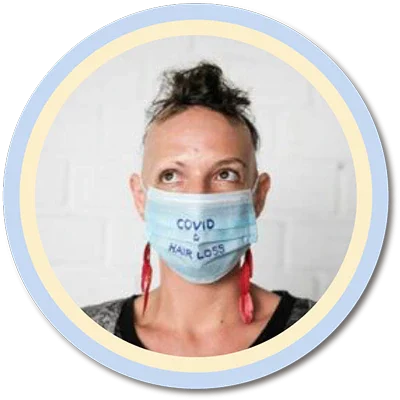
I’m pretty sure most of us were happy to see the back of 2020: a year of uncertainty, fear and panic for most of the world. And even though there have been definite upsides to enforced lockdowns – like slowing down, taking stock of what’s important and connecting online instead – it’s safe to say the pandemic’s cons, like COVID hair loss, have outweighed any pros.
Because as we move into a new year, hopeful for vaccines to change things around, there is one COVID-related side effect that’s lingered for many. One that may be hidden for now, but is calling for more attention every day.
I’m talking about alopecia. The medical form of hair loss, the thing I’ve had on and off since I was 11 and which I’ve written about, as Lady Alopecia, since 2018. I’ve been in contact with lots of alopecians over the past few years – through this website, through my work as an Alopecia UK research panel member and through Instagram. But the amount of emails, comments and direct messages have skyrocketed over the past year: from people of all ages experiencing the pain of hair loss for the very first time.
Coming up:

Hi there, I’m an alopecian, I’m not a doctor! Any advice I give is based on my own research and personal experiences. This site is however reader-supported. When you buy through external links, I may earn a tiny affiliate commission at absolutely no extra cost to you. Find out more.
The Center for Disease Control and Prevention lists ‘hair loss’ as one of the ‘serious long-term complications’ of the virus. So why the increase in hair loss during COVID-19? Why are more and more people reporting their hair falling out in clumps, a thinning hairline and bald patches than ever before?
I’ve read a lot of the research out there, plus considered the many messages I’ve gotten this year from newbie alopecians, to come up with the following 3 reasons for COVID hair loss.
In many cases, people aren’t actually experiencing patchy alopecia (alopecia areata) but a temporary form of hair loss called telogen effluvium (hair shedding). Telogen effluvium (TE) is a common side effect after a high fever and usually manifests 2-3 months after the illness (or in other cases, a traumatic event).
Now, we typically shed up to 100 hairs a day but when a fever or illness forces more hairs than usual into the telogen (shedding and resting) phase of the hair growth cycle, you’ll notice your hair becoming thinner, or coming out in clumps, as a result.
Remember, there’s a couple of months’ delay. So if you did have the virus – or another illness – it’s not uncommon to notice handfuls of hair coming out, in the shower or while brushing. That shedding might last another 6-9 months before your hair starts getting fuller again but usually, no treatment is necessary. However, you should consider activities to lower inflammation and prevent an elongated telogen phase, which I’ll cover soon.
Other people I’ve heard from have started losing their hair as a result of stress. And in particularly sad cases, these people are parents of children as young as 10 months old, with sudden and severe alopecia. Perhaps they’re picking up on the stress of the year from their environment or from a disruption in their routines.
For the older ones, the impact of a global pandemic, changes in diet and exercise habits, job loses and financial worries, plus separation from their loved ones – not to mention the niggling feeling that it won’t all go away anytime soon – have brought on a chronic state of stress in their bodies. The kind of inflammation that lingers long after the immediate threat has passed and which can flare up again at the slightest trigger.
We go into survival mode when faced with a threat – that’s our ‘fight or flight’ response, linked to our sympathetic nervous system. Our pupils dilate, our digestion halts and our bodies shut down whatever systems aren’t necessary for our immediate survival. Now, there are many side effects of this – like gut problems, menstruation difficulties and so on – but one that more and more people are noticing ever since the start of the pandemic is hair loss.
For those who’ve had the virus, their hair loss may mean that their immune system’s still on ‘attack’ mode. It fought off the virus successfully but it doesn’t know when to stop – so it keeps attacking their body, including their healthy cells (like hair follicles) and triggering hair loss.
Of course, there’s still plenty of first-time hair lossers who haven’t felt overly stressed about the situation. They’ve been coping just fine, running on autopilot to work as best they can, manage the kids being off school, make sure their parents are doing ok, keep everything going. This get-up-and-go response is important – it helps us survive. But when it’s over a longer period of time, when we can’t take active measures to calm the nervous system back down into its parasympathetic, ‘rest and digest’ state… that’s when things become serious.
Aside from the physical effects of a body not functioning as it should, the mental effects are enormous. Which can lead to more stress and more physical effects, like hair loss. Causing more mental anguish. It’s a vicious circle; one that’s particularly hard to break if you don’t know you’re in it.
If you’re experiencing hair loss for the first time in the wake of COVID, it’s easy to feel powerless. Just like the virus itself, you feel like alopecia has all the control – and there’s nothing you can do about it.
Wrong. There’s PLENTY you can do! These 3 steps mightn’t solve your alopecia instantly but they can help you reduce shedding, promote growth and help you cope with the mental effects of hair loss in the meantime.
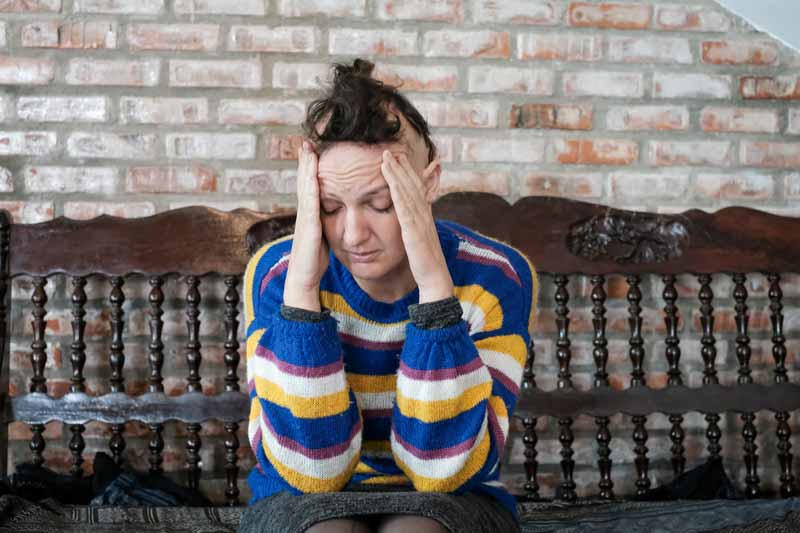
Step 1: Find ways to reduce stress
It’s not just a matter of telling yourself to calm down or taking a few deep breaths when anxiety comes knocking. Because the kind of internalized stress your body might be experiencing often isn’t noticeable. Not until the cause (chronic inflammation) leads to the effect (hair loss). Then all of a sudden you feel overwhelmed and don’t know where to start.
What you need to do is introduce a daily practice that reduces stress in your life. It’s important to do this EVERY DAY – even when you’re feeling good! – so you’re equipped and prepared for more challenging times.
5 minutes of slow, calming pranayama (breathwork) and 15 minutes of meditation. I do this first thing, before I’ve had breakfast or showered. Sometimes I’ll take longer and do some yoga; other times, if I only have 5 minutes, I’ll do a conscious deep breathing exercise (which doubles up as a meditation!)
If mornings don’t suit, try and carve out just 10-15 minutes a day to sit in silent reflection and breathe deeply. We can all spare 10 minutes, at some point! And even though we breathe automatically, often we just shallow breathe in our chest or forget about nasal breathing (which increases the oxygen we absorb and filters out impurities). Specific breathing exercises work to calm down the nervous system into that ‘rest and digest’ state, while helping you to focus your mind.
Leave the phone out of the room, turn off the TV and just sit with your thoughts. It’s a tough practice at first – but trust me, the benefits will come! I talk more about the healing effects of meditation in this post or, if you want to join me for a specific online course I’m hosting to reduce inflammation, lower stress and help you cope with the challenges of hair loss, take a look at this.
I know, it’s tempting during times of stress to turn towards comfort food. Especially during lockdown, when energy is low and you’re in need of a lift, your diet may center around sugary snacks, soft drinks and processed foods. While bread and carb-y things become a staple of every meal.
But this is one of the aspects over your life you do have control of – and it’s something that can make a HUGE difference to your physical and mental health (and yes, your hair loss!) if you take up healthier habits.
I’m not saying you need to deprive yourself entirely. It’s a tough enough time for everyone without a fad diet driving you crazy! BUT because alopecia is triggered by inflammation, it makes sense to reduce inflammatory foods as much as you can. Plus to eat more of the foods that are kind to your immune system.
I talk a lot more about the link between inflammation, diet and hair loss in this post but as a ‘quick tip’, if you’re shedding hair and you don’t know what to do, try cutting out the following foods for a full month.
Lower your alcohol and caffeine intake too, as much as possible. The foods on the above list are classed as ‘inflammatory foods’ in times of stress – so if you’ve any chronic inflammation already going on, they can trigger that autoimmune response. After even a couple of weeks, you should notice a shift in your energy, mood levels, skin and sleep. Maybe even after a month, you might see hair loss stop entirely and new hair start to sprout.
I know, it seems like a drastic measure. But you can do it, for a month! I know you can. 🙂
LA Says: This is the main advice I’ve offered people who’ve written to me this year about hair loss during COVID: “Take up some stress-reducing activities and lower inflammation in your diet”. Keep reading for my final tip!
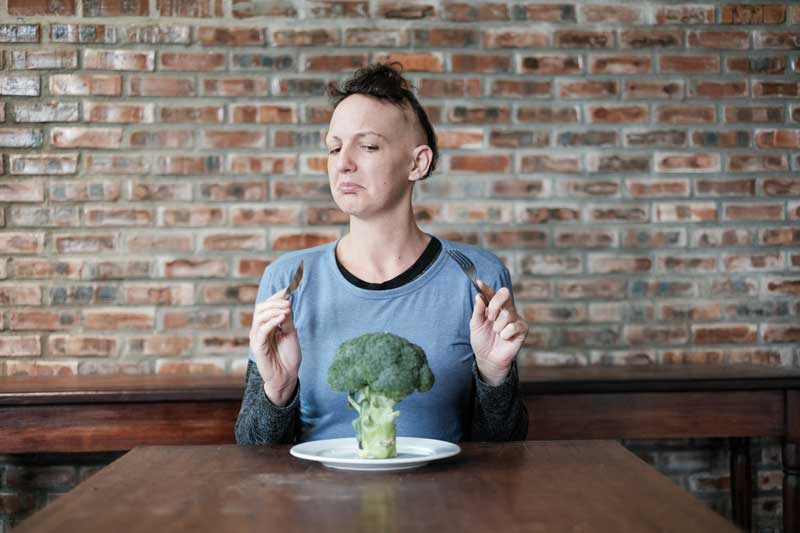
One of the most frustrating things about experiencing hair loss due to COVaID-19 is that you mightn’t be able to see anyone about it. With restrictions meaning you can’t see a specialist, you end up turning online instead – which can be hugely overwhelming, I get that!
But in fact, not being able to see a dermatologist or trichologist (hair doctor) might actually be a good thing. Because, in my experience and based on many reports I’ve read from LA readers, these doctors are all too quick to prescribe topical steroid creams like minoxidil, or – even worse – corticosteroid injections.

They might offer a ‘quick fix’ at first but often stop working as your immune system becomes resistant to them, too. They can thin your scalp skin, cause severe headaches and dizziness, not to mention the negative long-term effects on your immune system. Oh, and they come with a warning: hair loss has a good chance of returning when you stop using them.
I had these treatments when I was very young and wish someone had informed me of their dangers. So I’m telling you now: avoid them if you can! Because while they can be very effective in the short-term, they’re not really a long-term solution.
Of course, that’s up to you – but I’d suggest taking the holistic route by looking at what’s causing your hair loss in the first place. Try to lower stress, adjust your diet and keep your scalp in optimal health with these natural products:
LA Says: There are plenty of ‘hair loss shampoos’ out there, too. And I’ve covered them in detail elsewhere on this site. But before all that, see if you can treat your condition by changing up your lifestyle and diet habits instead. 🙂
In my 23 years as an alopecian, I’ve found that talking about it is one of the best ways to handle it. It’s perhaps why I’ve never been happier since shaving my head back in 2013 – I’m now forced to talk about it more! – and it’s definitely why I set up Lady Alopecia.
Hair loss can be a scary, frustrating and isolating experience. But you’re not alone – it’s actually far more common than you may think, especially in the wake of the pandemic. And you don’t have to go through it alone.
So why not talk about your condition with your family or friends? Or if you’re not ready for that, drop a comment below and let us know how COVID has affected your hair. Join the bald community on Instagram or sign up for my free newsletter to keep learning about ways to manage hair loss!
It’s easier said than done, I know, but it’s a high possibility that your hair will return with no treatment at all.
In fact, in a November 2020 study, 14 out of 58 COVID-19 patients, or 24.1% of them, reported alopecia. 15 were women and 9 were men and the average time they experienced alopecia after the virus was 58.6 days. For 5 patients, their hair grew back without treatment after an average of 76.4 days.
A small sample size, I know – but hopefully it shows you that this type of hair loss doesn’t have to be permanent, and it may not last more than a few months!
Remember: as long as you manage to reduce stress and inflammation, and do what you can to support regrowth – the natural way – you can get through this. And I’m here to help you, every step of the way!
Get free, semi-regular alopecia-related news things and musings.
Psst… If no welcome email shows up, check your spam.
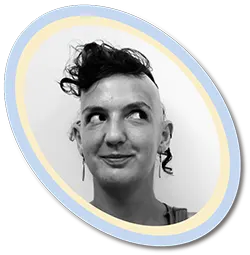
Alopecian. Yoga Teacher. Copywriter. Here to share information, offer support and show people the adventures that can lie in hair loss. I’m proud to have alopecia and I want to help others embrace their baldness, too!


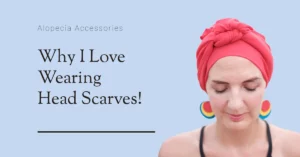

Every month, thousands with hair woes visit my site. The more the merrier! But it takes AGES to write posts and reply to emails. Don’t get me wrong, I love it! But running a website isn’t free. So I’m trying something new: I’m asking for your support. If Lady Alopecia has helped you, please consider buying me a (virtual) coffee or even become a patron of the site. Thanks!
I’m Emma. I’ve had alopecia for 24 years and I’m here to inform/hopefully empower people like me! Read my full story here. But I’m not a doctor, so any advice here is based on my own research and experience. I’m also in a few affiliate programs – see my disclaimer page for more. Or contact me here. Also, why not join a thousand fellow alopecians and get my-semi regular hair about life with irregular hair?
Psst… If no welcome email shows up, check your spam.
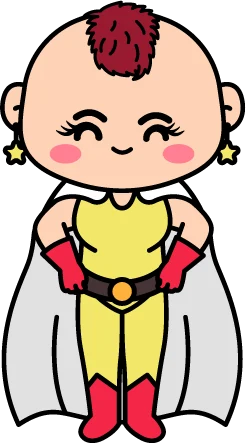
Small print time: Ladyalopecia.com is a participant in the Amazon Services LLC Associates Program, an affiliate program designed to provide a means for sites to earn advertising fees by advertising and linking to Amazon.com.
Copyright © 2023, Lady Alopecia. All rights reserved. Important – By using this website, you promise not to steal stuff. Thank you kindly.
Just stick in your email to join the gang.
If no welcome email appears, please check your spam. Oh, and don’t worry, I won’t give your details to Zuckerberg and you are free to unsubscribe at any time.
Join the gang and receive semi-regular news and joy from someone with very irregular hair.
4 responses
I started with ophiasis Alopecia in April. By August all hair was gone. I have wondered if Covid was in some way responsible. I don’t think at this time an antibody test would reveal anything or change anything but I have heard of so many people dealing with the same timeline. Stress could definitely be a factor. I have had a lot going on.
Your advice is spot on. Thank you. It has been a tough journey on top of everything but I choose not to hide it. This is me. It is great to know we are not alone in this.
Hi Yvonne, thanks so much for sharing your experience. And I’m really sorry about your ophiasis alopecia – I actually had to look up the type, having never heard of it before, and I actually think that’s what I have too! It looks very similar to my pattern of hair loss. I always just said alopecia areata as that’s what I was diagnosed with over 20 years ago but I guess they didn’t know too much about the various types of AA then. So thank you for bringing it into my radar!
The timeline you mentioned does seem very similar to a lot of new alopecians I’ve heard from. I do feel it’s all related as stress can do crazy things to the body, even if it’s stress we’re not aware about but one that embeds itself in a chronic level. I hope you find this piece useful in terms of managing that stress and please do get in touch if I can give you any more info about stress-reducing techniques!
Thanks for your lovely feedback also, and for sharing your bravery. You are for sure not alone and continuing to share will make it easier, trust me!
Lots of love and keep in touch,
Emma xxx
As someone who found my first alopecia areata patch in May, this post is incredibly useful and helps to explain what’s going on in our mysterious bodies! Thank you x
Sadie, thanks so much for your lovely feedback! And I’m really sorry to hear about your hair loss last year…hopefully having a few answers about why it may be happening will help…and remember, it doesn’t mean it’s permanent! Wishing you all the very best, and thanks again for your comment.
Emma x